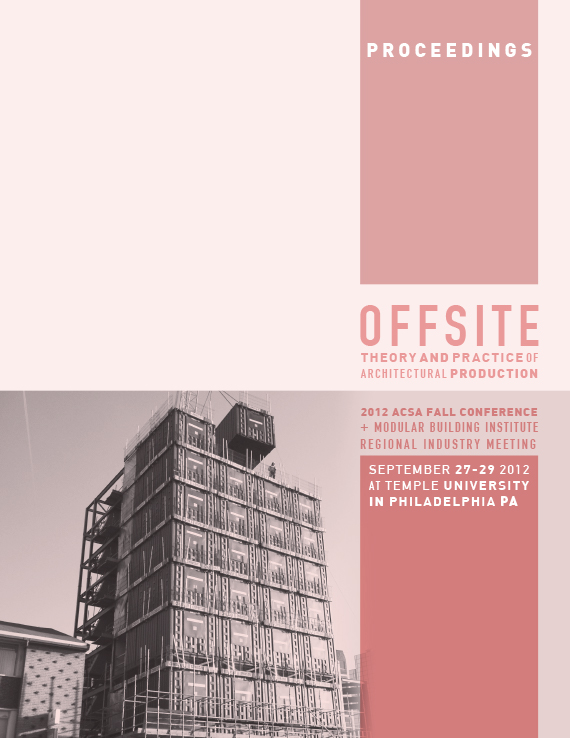Author(s): Pasquale De Paola
“An abstract machine in itself, any more than it is semiotic; it is diagrammatic(it knows nothing about of the distinction between the artificialan the natural either). It operates by matter, not by substance;by function, not by form.”– Gilles Deleuze and Felix Guattari, A Thousand Plateaus, page 141The redundancy of architectural production necessitates new modes of interdisciplinaryresearch that need to be more engaged in explorations concerningspeculative design methodologies. This paper generates from theidea that architectural form and its material expression ought to emergefrom the machinic assemblage of energy and matter. Within this framework,biological and material processes are quantitatively defined by mathematicaland physical aspects, which determine patterns of growth and morphogeneticvariations. Particularly, this tendency gravitates toward a muchdeeper understanding of biogenetic methodological analogues that are differentiatedby Deleuze-derived diagrammatic methodologies of multiplicity.Thus, to fully unpack this framework of complexity, we need to drasticallyrewire our traditional signification of architectural production and particularlyits material expressions and methodologies of construction to addressissues related to complex systems and networked assemblies.Historically, while modularization has defined the early developments ofmodernist architecture, its extreme modularization and consequent lack ofmorphogenetic differentiation has led to a sedentary architecture dictatedby rigid functionalism in which different inputs had produced the sameformal and material outputs. As a result, the signification of a stagnantmodular process ought to be critically reframed by generating a new methodologyprescribed by complex computational systems based on biologicalanalogues. Ideally, this system can create innovative modes of architecturalanalysis and material production.This paper will then examine the use of new models of architectural productionas they relate to the operability of specific computational tools such asGrasshopper and Generative Components. Those parametric-associative platformscan facilitate and simulate evolution of construction processes based oncomponents algorithmically organized. Most of this theoretical framework isunderlined by diagrammatic modes that deterritorialize the meaning of architecturalproduction in order to open it up to new functions and processes. TheDeluzian abstract machine reappears in the form of algorithmic computationaldesign procedure that destratifies traditional architectural production throughparametric manipulation of preset numerical data sets. Interestingly, this strategyproduces a multiplicity of distinctive procedural and morphogenetic differentiationswhile operating by matter, not substance; by function, not form.As contemporary architecture becomes increasingly dependent on the overwhelmingdigitalization of architectural production, we have to avoid returningto functionalistic approaches based on modularization of inputs andoutputs that create stagnant repetition. This paper concludes that the useof computational design strategies facilitates the process of differentiationwhile implementing a procedural approach where materials becomes genomicvariations and protocellular source code that can be algorithmicallygenerated and manipulated. To support this position, my paper will use casestudies from the work of Yona Friedman, Christopher Alexander, MichaelHensel of OCEAN and Patrik Schumacher.
Volume Editors
John Quale, Rashida Ng & Ryan E. Smith
ISBN
978-0-935502-85-5

 Study Architecture
Study Architecture  ProPEL
ProPEL 
